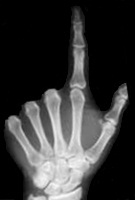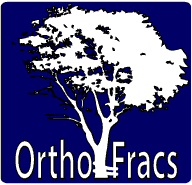Journal Club
November 2010
Autologous Chondrocyte Implantation in Cartilage Lesions of the Knee. Long-term evaluation with Gandolinium-Enhanced MRI
Author: Vasialadis, Danielson, Ljungberg, Mckeon, Lindahl, Peterson
Institution: University of Gothenburg Sweden and Sahlgrenska University Hospital Gothenberg, MRI mapping Beth Israel Deaconess Medical Centre, Boston Massachusetts
Journal:
MRI funded by grant from Genzyme
Reviewed by
Dr Owen Mattern
MBBS | Unaccredited Orthopaedic Registrar
Introduction
- ACI implant quality considered most likely predictor of long term clinical outcome
- Second-look arthroscopy and biopsy considered most effective way of evaluation
- Associated risks with second operation and potential graft damage through biopsy
- MRI proven effective diagnostic tool for examining structures of the knee
- Delayed gadolinium-enhanced MRI of cartilage (dGEMRIC) assesses hyaline cartilage
- Gadolinium spreads inversely in relation to gylcoaminoglycans (GAG)
- GAG concentration is related to cartilage degeneration
- Measured on T1 weighted films
- 487.3 in control patients
- 458.0 in mild arthritis
Hypothesis
- dGEMRIC MRI can give valuable information regarding quality and quantity of ACI repair
- May provide potential substitute for invasive methods
Methodology
-
31 volunteers with 36 treated knees selected from 219 patients who had ACI performed by senior author atleast 9 years previously (do not mention how patients were selected)
- 27 femoral condyle, 8 patella, 1 trochlear
- Used a technique previously described in 1994 NEJM paper
- Retrospective patient file review
- Lesions size and location
- History of previous cartilage treatment surgery
- Concomitant lesions
- Clinically evaluated using KOOS (5 subgroups looking at pain, symptoms, functions of daily living, sports and recreation, knee-related quality of life
Methods - MRI
- 30mL gadolinium IV 90min before MRI
- Patients walked for 15 minutes IV infusion
- MRI assessed for
- Filling of defect
- Smoothness of surface
- Integration to surrounding tissue and subchondral bone
- Subchondral oedema
Methods - MRI
- Two regions of interest (ROI1 and ROI2) examined
- ROI1 repair tissue zone
- ROI2 same slice MRI as ROI1
- Middle of healthy cartilage away from treated area
Methods - Statistics
- T-test to compare independent means and paired T-test to compare ROI values (commonly applied when a test would follow a standard distribution)
- Wilcoxon test nonnormal data (non-parametric data. Used when t-test distribution cannot be assumed)
- Chi-square compare percentage of patients
- Pearson correlation coefficient to compare correlation between ROI1 and ROI2 (frequency of distribution is equal to what is expected)
Results
-
Results - Patient Demographics
- Mean age 29.40 (17.5-50.5)
- Lesion size 5.14cm2
- 12.9 years after ACI (9-18years)
- 16 women, 15 men
- 23 right, 13 left
- MFC 20, LFC 7, Trochlea 1, Patella 8
Results - MRI Measurements
- T1 value
- ROI1: 467.5, ROI2: 495.3 - not SS (T1 values from baseline study: 487.3 in control patients,458.0 in mild arthritis)
- “no significant differences were detected between ROI1 and ROI2, suggesting a comparable proteoglycan content in repair tissue and the surrounding cartilage”
- ROI1: 467.5, ROI2: 495.3 - not SS (T1 values from baseline study: 487.3 in control patients,458.0 in mild arthritis)
- ROI1
- 39% subchondral cysts (14pts)
- 64% intralesional osteophyte (23pts)
- Lesion size had no predictor for MRI findings
- 75% covered >50%, 7 covered <50%, 2 exposed subchondral bone
Results - KOOS
- Pain 80.0
- ADL 85.6
- Symptoms 70.7
- Sports and recreation 48.3
- QOL 57.8
- Irregular surface lesions had better KOOS outcome than smooth surface in all facets (p<0.05)
Discussion
-
Discussion
- Mention that clinical scores can be unreliable and that evaluation of the quality of the repair can predict long-term function
- Biopsy provides best current option
- Morbidity associated with biopsy
- May miss intralesional osteophytes
- Often done on patients with complications
- Patient selection bias
Discussion
- Osteophytes had no association with poor clinical outcomes
- “probably constitute a negative prognostic factor”
- T1 relaxation times similar to other studies
- Different dose of gadolinium compared to other published studies
- Different measurement between ROI1 and ROI2 not discussed
- Actually state that ROI1=ROI2
- Majority of discussion is regarding quality of ACI graft
- Not the aim of the paper
- “9-18 years after ACI, the cartilage defect area s restored, and the quality of the repair tissue is identical to the surrounding cartilage”
Pros of Study
- Very few
- Long follow up time of patients
- Reading of MRI cross-referenced to outside specialist institution
Cons of Study
- Sponsored by Genzyme
- No discussion on how volunteers were selected
- Large potential from selection bias
- Hypothesis was based on dGEMERIC MRI giving valuable information
- No cross-reference to arthroscope finding
- No correlation to KOOS outcome
- Used standard dose of gadolinium when other papers have used weight adjusted dosing
- KOOS only calculated pre-operatively
- No power calculation with paper appearing under powered
- Conclusions do not match with data
Take home message
- dGEMRIC MRI may be useful, but this study does not help in this determination
Webpage Last Modified:
12 March, 2011



